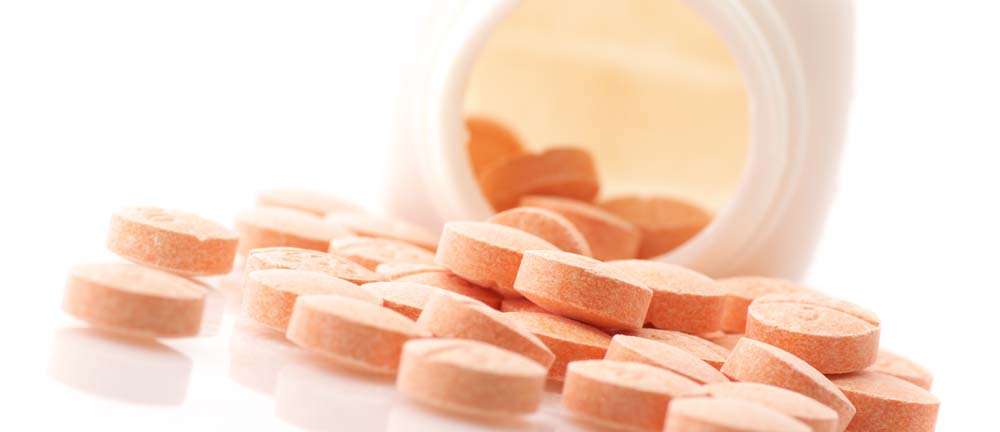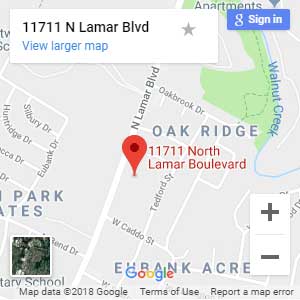Many people take Suboxone in hopes of avoiding the uncomfortable side effects of opioid withdrawal. However, this is not an entirely effective way to do so, as Suboxone use can cause addiction and withdrawal symptoms too. Whether you’re quitting heroin or Suboxone, the withdrawal experience is just a part of the process, but medical detox can offer a more comfortable, safe, and effective way to detox.
Table of contents
What is Suboxone?
Suboxone is an opiate replacement drug that is often used during detox to treat heroin addiction and withdrawal. It is a combination of two different medications: naloxone and buprenorphine.1 Suboxone works by reducing cravings for opioids and it is typically administered in controlled and tapered doses during detox.
Subutex vs. Suboxone
Both Subutex and Suboxone contain the active ingredient buprenorphine and are used to treat opioid addiction. Subutex was formulated before Suboxone, but it has a higher potential for abuse because it does not contain naloxone, which blocks the effects of opioid drugs.
Of the two drugs, Suboxone is the preferred drug in the treatment for opioid addiction because it is less likely to be abused. Regardless, people who are using either medication should also also be actively enrolled and participating in a comprehensive addiction treatment program to get the best results.2
Getting High on Suboxone: Is Suboxone Addictive?
Although Suboxone is designed to be used in a medical setting and should be administered by a medical professional, it may also be abused without a prescription or with other drugs that will enhance its high. Getting high on Suboxone isn’t typically the intention of most people using it, but it is possible. When it is abused in this way, it can be addictive and may cause withdrawal symptoms of its own if users suddenly stop taking it.
About Suboxone Withdrawal
Many medical professionals say when it’s taken properly, people using Suboxone for opioid withdrawal will not experience any withdrawal symptoms or cravings. However, as a part of a comprehensive addiction treatment program, Suboxone is typically used on a long-term basis, which increases the likelihood of dependence and addiction.
In addition, Suboxone may not be safe for people who:
- Are not likely to follow the prescribed treatment plan or who do not understand how Suboxone treatment works
- Are abusing benzodiazepines or alcohol
- Have tried Suboxone treatment (or other opioid maintenance treatment) before without success
- Have a serious or untreated mental illness or are suicidal
- Have a lack of recovery support at home3
People who abuse Suboxone may become moderately or severely addicted, depending on how often they took it and how much they took each dose.4 If the medication is stopped too quickly, or if a person tries to quit cold turkey, they may experience Suboxone withdrawal symptoms.
Suboxone withdrawal can be extremely uncomfortable and the withdrawal effects are similar to that of other opioids. The side effects can last up to one month or longer, but the duration and severity will vary greatly from person to person. Since the withdrawal can be severe, it’s important to seek out medical care while detoxing from Suboxone. People who attempt to detox from Suboxone on their own have a greater risk of relapsing.
Symptoms of Suboxone Withdrawal
The symptoms of Suboxone withdrawal can range from mild to severe, depending on how long a person took Suboxone and how large the doses were. Since Suboxone is a partial opioid agonist, it creates withdrawal effects that are similar to opioid withdrawal.
Common Suboxone withdrawal symptoms include:
- Depression
- Anxiety
- Irritability
- Restlessness
- Cravings
- Insomnia
- Nausea
- Vomiting
- Abdominal pain
- Diarrhea
- Runny nose
- Teary eyes
- Muscle aches/cramps
- Lower back pain
- Yawning
- Low-grade fever
- Sweating
- Increased blood pressure
- Increased heart rate5,6
Suboxone Withdrawal Timeline
Suboxone withdrawal may be different for each person, but there is a general timeline of symptoms for Suboxone withdrawal that can be expected.
|
Suboxone Withdrawal Timeline
|
|
| 72 hours after the last dose | During this time, the physical symptoms of Suboxone withdrawal are at their worst. This may include nausea and vomiting, diarrhea, muscle aches, fever, sweating, runny nose, teary eyes, and increased blood pressure and heart rate. |
| 1 week after the last dose | Although most of the physical symptoms of Suboxone will have subsided after one week, body aches and pains, mood swings, and sleep problems usually still remain. |
| 2 weeks after the last dose | Most people feel much better two weeks after the last dose of Suboxone. However, feelings of depression can linger, making it extremely difficult to stay sober. |
| 1 month after the last dose | Some people still experience strong Suboxone cravings and symptoms of depression one month after withdrawal first began. In some instances, these withdrawal symptoms may even last for several months. |
Since Suboxone withdrawal symptoms like depression and cravings can linger for a long time, aftercare is essential to sustained sobriety. This may include residential drug rehab, IOP, and/or a sober living program. Continued care options like these will decrease a person’s risk for relapse and provide varying levels of sobriety support after Suboxone use has been tapered down to nothing.
Professional Treatment for Suboxone Addiction, Detox and Withdrawal
If you want to recover from opioid addiction, taking Suboxone alone and hoping for the best isn’t the best option. Although effective, Suboxone treatment for opioid addiction and withdrawal works best when it is administered in a medical environment and is combined with behavioral therapy and a comprehensive addiction treatment plan.
Although any kind of drug withdrawal can be scary to think about, it’s important to remember that Suboxone itself is also habit-forming, so you may experience withdrawal whether you quit opioids with or without the aid of Suboxone. Fortunately, there are detox options that can make Suboxone detox and opioid detox much more comfortable.
Medical drug detox provides medication-assisted treatment to reduce or eliminate uncomfortable withdrawal symptoms associated with opioid detox. Instead of suffering through uncomfortable opioid withdrawal symptoms at home or in a hospital, a medical drug detox program offers semi-private or private rooms with 24/7 medical care, chef-prepared meals, and counseling to address the psychological withdrawal symptoms too. These types of detox programs are also fluid, meaning they are individually designed and adapted to meet the needs of detox clients.
An individualized opioid detox program at am Austin detox center also provides a safe and home-like environment in which to detox. Compared to a cold, impersonal hospital, being in a detox center makes the whole experience more comfortable and offers an environment that is conducive to physical and mental healing.
Outpatient Program San Antonio – Your Pathway to Recovery at Briarwood Detox Center
For those who have completed detox or are stepping down from inpatient care in San Antonio, an intensive outpatient program (IOP) can be a natural next step. Nova Recovery Center’s San Antonio drug rehab IOP offers flexible, structured support that lets you continue healing while living at home. Participants attend regular counseling sessions and group meetings, which provide accountability and help you practice recovery skills in real life. Because it’s local, you stay close to family and work commitments, making it easier to balance treatment with everyday life. This kind of outpatient rehab reinforces the progress you made during detox, giving you a strong community and professional guidance as you transition toward independent, sober living.
Choose Briarwood Detox Center for Outpatient Treatment in Austin
As you continue your recovery in Austin, you might consider adding an intensive outpatient program to your support system. Nova Recovery Center’s IOP Austin rehab program is designed to bridge the gap between detox and independent sobriety. It offers regular therapy sessions and peer support groups in a convenient Austin setting, so you can keep working or caring for your family while attending treatment. The IOP emphasizes communication and accountability, reinforcing the skills you’ve learned during detox in real-world situations. By engaging in an Austin-based IOP, you stay connected to the city’s vibrant recovery community and receive ongoing guidance, all without putting your life on hold.
Substance Abuse Trends in Houston, Texas
While these Houston statistics are concerning, there is hope for recovery through proper treatment and continuing care. After completing detox, many people in Houston choose an intensive outpatient program (IOP) to maintain momentum in sobriety. Nova Recovery Center’s intensive outpatient program in Houston provides structured therapy sessions, relapse prevention education, and peer support several times a week—all while you live at home. Participating in an IOP lets you rebuild your daily routine and practice sober living skills with professional guidance, without the need for a full residential stay. It’s a flexible option that keeps you connected with Houston’s recovery community and helps sustain long-term recovery beyond detox.
Frequently Asked Questions About Intensive Outpatient Programs (IOP)
Q: What is an Intensive Outpatient Program (IOP)?
A: An IOP is a structured treatment program that offers therapy sessions (individual and group) multiple times per week—usually 9–19 hours total—while allowing clients to live at home and continue their daily responsibilities. If you’re in Austin, check out Nova Recovery Center’s IOP Austin rehab for local support.
Q: How long does an IOP last?
A: IOPs typically run between 2–12 weeks, with most programs lasting around 8 weeks. For example, after detox in Houston, Nova Recovery Center’s intensive outpatient program in Houston offers flexible schedules to fit your needs.
Q: Who is a good candidate for IOP?
A: Ideal candidates have completed detox or inpatient care, have a stable home environment, and need structured support while living at home. For San Antonio residents, Nova offers a comprehensive San Antonio drug rehab IOP tailored for this stage of recovery.
Q: What types of therapy are included in an IOP?
A: Most IOPs combine individual counseling, group therapy, life-skills workshops, and sometimes family therapy or specialized tracks such as trauma, relapse prevention, or dual-diagnosis care .
Q: Is IOP covered by insurance?
A: Yes—IOP is often covered by medical or mental health insurance when referred by a clinician following a higher level of care . Nova Recovery Center accepts many major insurance plans at each location (Austin, Houston, San Antonio), and their team can verify coverage for you.
Q: Can I work or go to school during IOP?
A: Absolutely. One of the key benefits of IOP is maintaining daily routines, including work and family, while still receiving significant therapeutic support.
References:
- https://www.suboxone.com/treatment/suboxone-film
- https://www.naabt.org/faq_answers.cfm?ID=2
- https://www.choosehelp.com/topics/suboxone-and-methadone/can-a-doctor-prescribe-you-suboxone-are-you-an-appropriate-candidate
- https://www.everydayhealth.com/drugs/suboxone
- https://www.choosehelp.com/topics/suboxone-and-methadone/otc-and-prescription-medications-used-to-alleviate-suboxone-withdrawal-symptoms
- https://www.ncbi.nlm.nih.gov/pmc/articles/PMC3835595/


